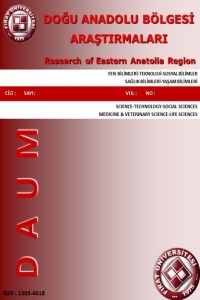ÜÇ BOYUTLU ELEKTROMAGNETİK DAĞILIM PROBLEMLERİN MOMENT METOD ÇÖZÜMLER İÇİN ETKİN DALGACIK DÖNÜŞÜM YAKLAŞIMI
3D Saçılım, Dalgacık Matris Transform, Moment Metodu, Büyük Saçıcılar, Seyreklik
AN EFFECTIVE WAVELET TRANSFORM APPROACH FOR THE MOMENT METHOD SOLUTIONS OF 3D ELECTROMAGNETIC SCATTERING PROBLEMS
___
- 1. Goswami, J.C., Chan, A.K., and Chui, C.K., 1995. On Solving First-Kind Integral Equations Using Wavelets on a Bounded Interval. IEEE Trans. Antennas and Propagation, AP-43, 614-622
- 2. Guan, N., Yashiro, K. and Ohkawa, S., 2000. On a Choice of Wavelet Bases in the Wavelet Trans-form Approach. IEEE Trans. Antennas and Pro-pagation, 48(8), 1186-1190
- 3. Kim, H. and Ling, H., 1993. On the Application of Fast Wavelet Transform to the Integral Equation solution of Electromagnetic Scattering Problems. Micro.Opt.Tech.Lett., 6(3), 168-173
- 4. Steinberg, B.Z and Leviatan, Y, 1993. On the Use of Wavelet Expansions in the Method of Mo-ments. IEEE Trans. Antennas and Propagation, AP-41, 610-619
- 5. Sarkar, T.K., Su, C., and et al., 1998. A Tutorial on Wavelets from an Electrical Engineering Perspective, Part I: Discrete Wavelet Techniques. IEEE Trans.on Antennas and Propagation Mag., 40(5), 49-69
- 6. Wagner, R.L.and Chew., W.C., 1995. A study of wavelets for the solution of electromagnetic integral equations. IEEE Trans. on Antennas and Propagation, 43(8), 802-810
- 7. Wang., C.F., 1995. A hybrid wavelet expansion and boundary element analysis of electromagnetic scattering from conducting objects. IEEE Trans. on Antennas and Propagation, 43, 170-178
- 8. Xia, M.Y., Chan, C.H., et al., 2001. Wavelet-based simulations of electromagnetic scattering from large-scale two-dimensional perfectly conducting random rough surfaces. IEEE Trans. on Geoscience and Remote Sensing, 39(4), 718-724
- 9. Xiang, Z and Lu, Y, 1997. An Effective Wavelet Matrix Transform Approach for Efficient Solution of Electromagnetic Integral Equations. IEEE Trans. Antennas and Propagation, 45(8), 1205-1213
- ISSN: 1303-4618
- Başlangıç: 2002
- Yayıncı: Fırat Üniversitesi
WAVELET (DALGACIK DÖNÜŞÜMÜ) VE YAPAY SİNİR AĞI KULLANARAK SES SİNYALLERİNDEN KONUŞMACI TESPİTİ
Murat İKİZ, Mehmet AKIN, Bahattin KURT, Hüseyin ACAR
YENİ TİP BİR KORDON MAKİNASININ TASARIMI VE VERİMLİLİĞİNİN ARAŞTIRILMASI
Yahya Hişman ÇELİK, Cebeli ÖZEK
Şener TULUMOĞLU, Ergin KARİPTAŞ
BİR ARAP TAYINDA HERNİA SCROTALİS OLGUSU VE OPERATİF SAĞALTIMI
